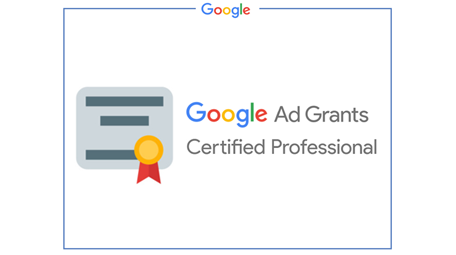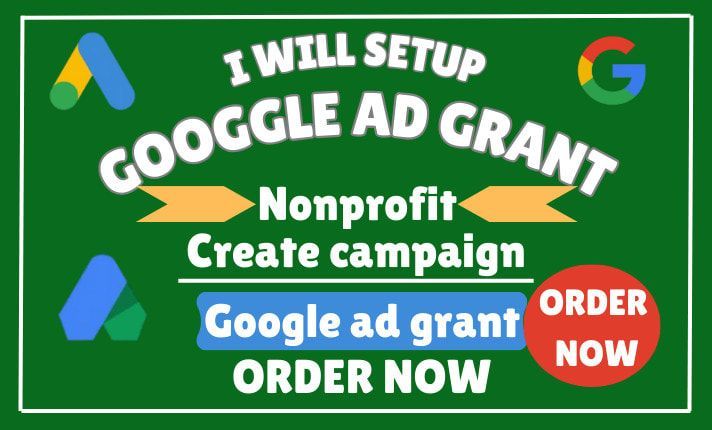


Organizations with effective nonprofit marketing strategies utilize many tools to reach their audiences. From email blasts to social media posts, these organizations leverage numerous platforms to communicate valuable information. Among all these platforms, one source of truth remains constant—your nonprofit’s website. Whether you’re promoting matching gifts or an upcoming fundraising event, most communications point back to your nonprofit’s website for more information.
If your nonprofit takes advantage of the $10,000 Ad Grant from Google, you’re taking the right steps to promote your site and your organization’s most valuable information. However, the Google Ad Grant program isn’t a single-step process.
Nonprofits are not only required to maintain their eligibility for the Google Ad Grant but also must optimize their ads and accounts to drive real results from the program. In this guide, we’ll show you how to optimize your Google Grant by covering the following topics:
What is Google Grant optimization?
How to manage your nonprofit’s Google Ad Grant compliance
How to gauge your nonprofit’s campaign performance
How to optimize your nonprofit’s Google Grant account ads
Conclusion and additional resources
Truly making the most of this grant means managing it on a regular basis. When you do, you’ll expand your outreach as you increase website traffic and consistently appeal to new internet searchers. Understand what it means to optimize your Google Grant so you can develop a strategy that will effectively reach a large audience of potential supporters.
Click this graphic to learn more about the Google Ad Grant and how it can help promote your nonprofit’s matching gift program.
This section defines Google Grant account optimization.
What is Google Grant optimization?
Google Grant optimization means managing your nonprofit’s Google Ad Grant account and the advertisements you’ve created to ensure everything stays compliant with Google’s management policies and relevant to users’ search intents. Although you can optimize almost any aspect of your Google Ad Grant participation, some common areas for improvement include:
Keyword specificity: Ensure your ads target specific keywords (preferably long-tail, non-competitive terms). Look for opportunities to refine your keyword choices so that they’re more relevant to your organization’s current operations or goals. For example, an increase in the kitten population during the spring months might prompt an animal shelter to target keywords such as “spring kitten adoptions.”
Data organization: In order to keep keywords relevant to your cause, your nonprofit will have to keep hygienic keyword data. This means regularly checking the quality and relevance of your keywords so that you can adjust any keywords that aren’t performing well. An animal shelter might remove the keyword “pet adoptions as Christmas gifts” in February when it becomes irrelevant to the ad’s landing page. To determine when a keyword becomes outdated or nonvaluable, nonprofits should track keyword metrics, such as click-through rate (CTR), to understand how the keyword is performing.
Website improvements: Ensure that your website is relevant to the advertisement and provides a positive user experience for searchers who click on your ad. For starters, you can check to make sure the page is branded to your nonprofit, provides valuable information for the user, and includes the keyword targeted in the ad. Don’t stop at your landing page, though; ensure your website as a whole is valuable and easy to use for its visitors.
Account structure: Google’s guidelines for the way you use your Google Ad Grants account require nonprofits to maintain an orderly account structure. For example, you must include more than one ad per ad group and at least two ad groups per campaign. If your nonprofit doesn’t already follow this structure, you’re not only at risk of account deactivation but also missing out on valuable keyword insight.
These aspects of your Google Ad Grant participation are just a few elements that need regular maintenance. Remember, there are countless opportunities for optimization, and it’s a crucial part of leveraging Google Ads for your nonprofit’s outreach efforts. Both the account itself and the ads you create must be refreshed to meet your audience’s needs.
It’s natural for this to seem overwhelming—after all, the Google Ad Grant is free marketing funding. Shouldn’t it make nonprofit marketing easier? If you didn’t want a Google Ad Grant agency’s help during the application process, this is where their services can be especially helpful. They’ll manage your account so that all optimization tasks are completely handled while your nonprofit’s leaders focus on fulfilling your mission.




